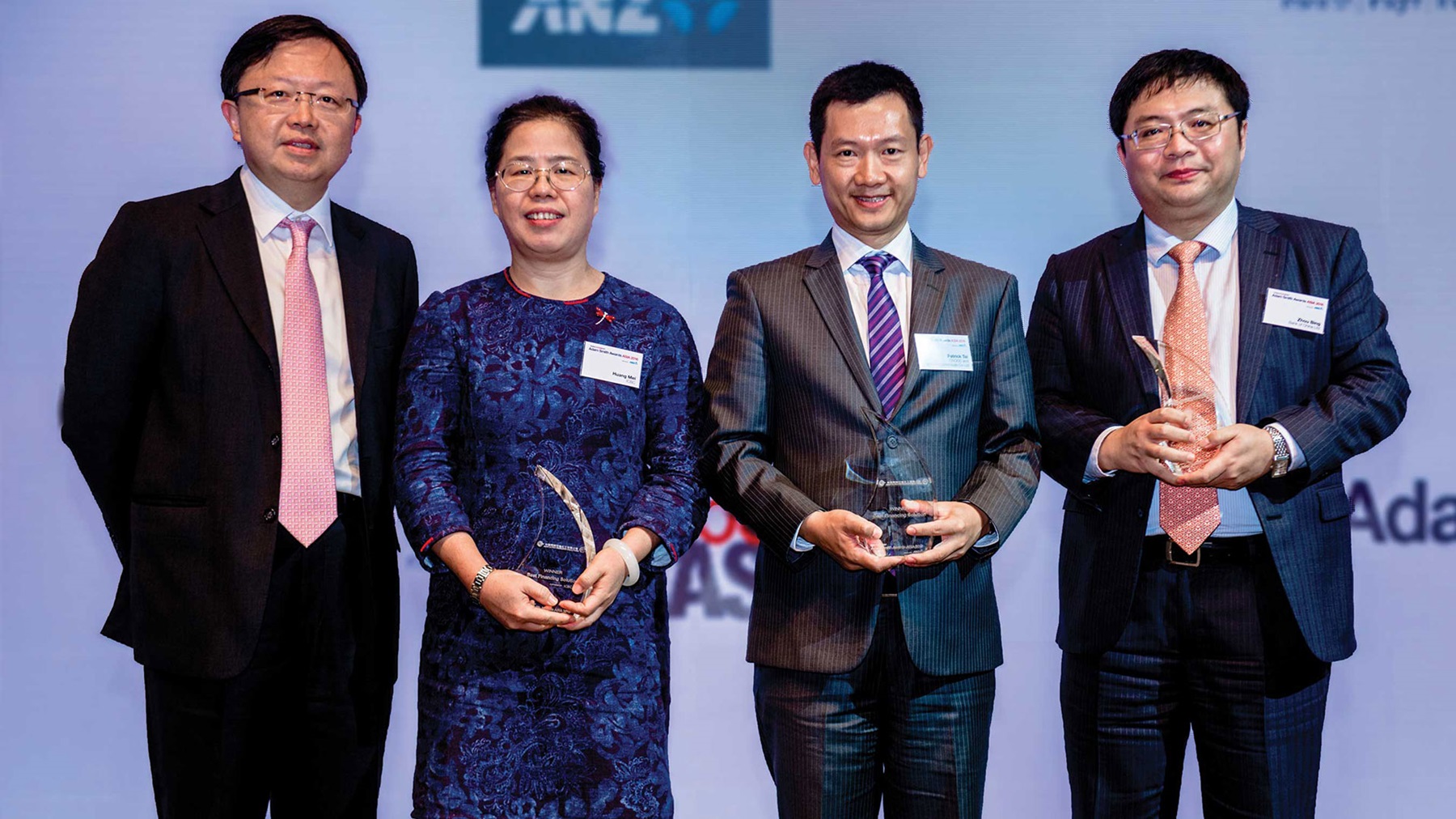
Photo of Hobson Chan, CNOOC, Huang Mei, ICBC, Patrick Tai, CNOOC and Zhou Bing, Bank of China.
This case study showcases how a non-recourse project financing of US$3.3bn was closed at a time when the project scope was evolving. It was the largest project financing transaction in the Chinese petrochemicals industry in 2016. The execution is exceptional as it took just four months from the RFP issuance in June to the loan contract signing in September.
Patrick Tai
Finance Director
Hobson Chan
Treasurer

CNOOC and Shell Petrochemicals Company Limited (CSPC) was established in late 2000. It has built and now operates a world-scale petrochemical complex in the Daya Bay Economic and Technological Development Zone, Huizhou, Guangdong Province.
in partnership with


The challenge
The challenge was to close a non-recourse project financing of US$3.7bn within four months and at a time when the project scope was evolving.
Challenges envisaged
The following unique characteristics make this financing more challenging than any financing for a green field project:
-
Size
The total aggregate size is unprecedented in CSPC history and is also one of the largest in the industry.
-
Urgency
The treasury team had to close the financing and achieve draw down within six months (by November), therefore project planning and management are critical.
-
Structure
A large-scale construction project typically requires some sort of guarantee or credit enhancement, as the lenders’ appetite to take construction risk is low. However, the shareholders had a strong preference not to provide any shareholders’ guarantee.
-
Currency risk
While the project construction cost is predominantly RMB; there were some forex components. However, the detailed currency mix will not be available until 2017. How to effectively mitigate currency risk is an additional challenge for the financing team.
-
Dynamics between the existing consortium and the Expansion Project lending consortium
CSPC still has a sizable outstanding term loan provided by a lending consortium of six lenders under an asset pledge structure. The existing lenders have veto right to stop CSPC from borrowing new debt. The treasury team not only needs to pitch the expansion project lending consortium but also needs to develop a financing solution acceptable to the existing lenders.
-
Huge draw down amount close to year-end
The partially constructed assets will be transferred to CSPC at the deal completion and CSPC will draw down significant bank debt when liquidity tends to be tight around year-end.
The solution
CSPC developed a base case financing structure by bundling assets and cash flow from existing and expansion projects as security to both existing and expansion project lenders. In addition, CSPC requested the lenders to provide an alternative quote on a “clean basis”. This approach safeguards the base case financing plan, yet gives CSPC the opportunity to capture the upside case.
A robust Project Information Memorandum was complied with comprehensive loan documentation that provides full clarity of the deal terms.
In order to convince the lenders to accept the unsecured structure, CSPC provided a comprehensive analysis to help the lenders understand the market dynamic in the petrochemicals industry. CSPC also prepared detailed cash flow analysis including sensitivities to stimulate debt repayment capacity under various adverse situations. By quantifying the risks, it is much easier to help the lenders to see that their interests are well protected under the no asset pledge structure.
Best practice and innovation
This is the largest project financing transaction in the Chinese petrochemicals industry in 2016. The execution is exceptional, especially given that CSPC did not engage any financial advisor. With strong collaboration between the joint venture team and shareholders’ financing experts, the financial close was reached within four months of RFP issuance, two months ahead of a tight project schedule. It is also one of the fastest non-recourse PF deals ever achieved in Asia.
Key benefits
- Enhanced financing structure from a secured basis (pledge of all assets) to an unsecured basis (clean).
- Among the most competitive pricing ever achieved with such tenor on a non-recourse basis for a project of this scale.
- Innovative incentive mechanism to mitigate huge first draw down in Q416. If any lender failed to meet the first draw down obligation, other lenders could step in. The share of the lender who fails to lend would be permanently reduced.
- Multiple tranches with dual currency flexibility structure to support the phased construction of the Expansion Project.